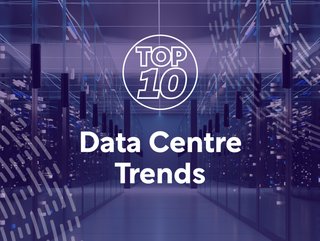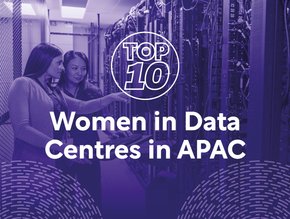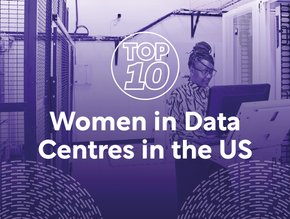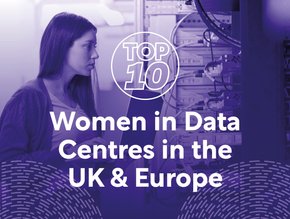
The data centre industry is set to continue seeing huge changes in 2024. Increased power demands are being caused by new technologies like AI, putting pressure on existing grids.
Continued impact businesses means that industry leaders are having to find new ways to drive innovation whilst ensuring that their goals and guidelines are being met. Additionally, they are having to ensure that they are catering to increased demand, whilst remaining sustainable.
With this in mind, Data Centre Magazine considers some of the current leading trends that are expected to continue impacting the data centre sector in 2024.
10. Automation
Data centre automation is the process of automating the routine workflows and processes of a data centre. This includes scheduling, monitoring, maintenance and application delivery. Automation also aims to increase agility and operational efficiency, in addition to reducing the time IT needs to perform routine tasks.
This type of automation is immensely valuable to businesses because it frees up human computational time. It also delivers insights into servers, automates routine procedures, programmes scheduling and monitoring tasks and enforces processes in line with policies.
9. 5G
5G can help improve operational efficiency within the data centre, in line with the increasing demand for data processing and communication services throughout the industry. For example, combining 5G and data centres at the edge can help industries tap into low latency, high speeds and large bandwidth that 5G can offer.
Innovative 5G can also contribute to cloud and sustainability solutions. According to industry leader Verizon, combining a 5G data centre with a traditional cloud-computing environment offers companies innovative processing for advanced analytics in the cloud.
8. Grid modernisation
Grid modernisation is becoming more of a topic for conversation in 2024, with data centres looking to update their grid infrastructure to meet global growth. Modernising the grid aims to make data centres more resilient with the use of cutting-edge technologies, equipment and controls. It is also argued that it will allow data centres to support ESG guidelines with electric grids.
A notable example of grid modernisation is multinational investment company BlackRock acquiring Global Infrastructure Partners (GIP) in January 2024 to accelerate digital infrastructure developments, which includes transforming the power grid.
7. Heat Reuse
As data centres are having to work harder to cater to demand, they are generating excess heat that could have detrimental impacts on the planet. When it comes to the data centre sector, using excess heat from facilities has been discussed as a potential solution to the energy crisis.
Heat reuse could contribute to organisations being more efficient, reducing global energy consumption and streamlining services. Excess heat could be repurposed to heat houses and business buildings, thereby generating less waste and energy use.
6. Renewable Energy
Transitioning the data centre to renewable energy, or constructing facilities with solely renewable materials, has been deemed necessary for the industry to thrive. Data centres are already responsible for 1.5% of the total global energy consumption - a figure that is expected to reach 8% by 2030.
Critical loads can be moved to renewable power, with Ciaran Flanagan, VP and Global Head of Siemens Data Center Solutions, telling Data Centre Magazine: “The data centre industry is helping to drive decarbonisation by underwriting a significant proportion of grid-scale, carbon-free energy for industry.”
5. Hybrid Cloud
Hybrid cloud environments ultimately work to create new digital possibilities, whilst opening the door to cost-effective scalability, flexibility and modernisation. Put simply, a business is able to better save money whilst simultaneously increasing their speed and agility.
Plenty of businesses are working towards hybrid cloud solutions for their data centres. In particular, Microsoft Azure is being used by the likes of Amdocs and Vodafone (announced this week, January 2024) to overhaul their data centres and improve their cloud-based strategies, integrating their existing applications with Azure services.
4. Edge Computing
HPE defines edge computing as an edge data centre that is found closest to devices and end users as part of a distributed edge computing infrastructure. In contrast to traditional cloud computing, edge computing distributes computing resources closer to the data sources, or "edges" of the network which then offers several advantages, including reduced latency, improved bandwidth utilisation, and enhanced privacy and security.
Edge computing has emerged as a promising solution for big data management and analysis, notably because it reduces the distance information needs to travel.
3. ESG
With data centres becoming more business-critical, companies are having to ensure that their Environmental, Social, and Governance (ESG) strategies are being implemented across their business operations.
ESG in the data centre offers sustainable solutions to mitigate concerns such as carbon footprint or excess water use, whilst maintaining maximum efficiency. Given the rise of new technologies like AI putting greater pressure on data centres, spending on digital infrastructure is likely to increase to tackle new challenges posed by needing to be more sustainable and more renewable energy.
2. Liquid Cooling
Liquid cooling was arguably one of the most talked about data centre trends last year (2023), as increased numbers of companies pioneered new liquid cooling technologies. Liquid cooling itself refers to the use of liquid to lower the temperature of computer processor units (CPUs) and graphics processing units (GPUs).
Given rising costs amid an energy crisis and pressures to be more environmentally efficient, the use of liquid cooling within data centres has been celebrated for its potential to improve energy efficiency. Additionally, it offers the possibility of redirecting excess heat to other purposes, such as commercial or residential heating.
1. AI and Machine Learning
AI and machine learning technology has been under high demand, with data centre clients very keen to invest. Data centres are now having to come up with new and innovative solutions to ensure that their facilities have the capability to provide enough power and energy for AI.
This technology is working to revolutionise the data centre industry, offering new capabilities such as predictive analytics to help automate routine operations and streamline tasks. It is able to complete this whilst also improving cyber defences during a time of continued security threats.
******
Make sure you check out the latest edition of Data Centre Magazine and also sign up to our global conference series - Tech & AI LIVE 2024
******
Data Centre Magazine is a BizClik brand






